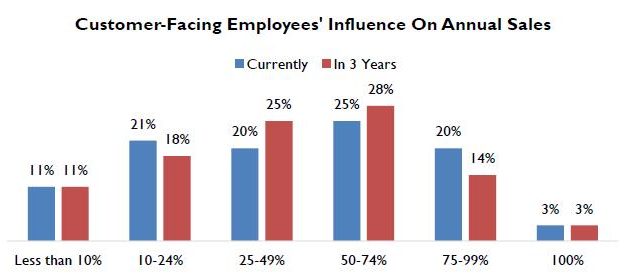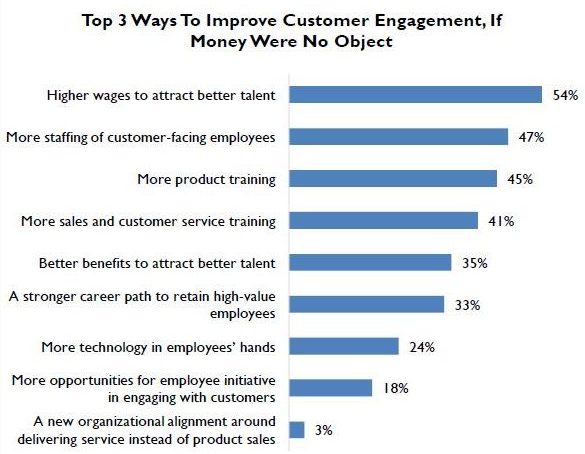Product
Orquest maximizes business efficiency through optimal employee scheduling and automation.
 Smart Planning
Smart Planning
Size and plan your in-store teams to provide the best customer service and maximize your performance.
Customer-facing employees as a company’s main asset

Mar 27 2018
Retailers are currently going through difficult times due to the traffic decline in the stores because of the rise of ecommerce. Conversion rate optimization is the key weapon to combat the decline in customer traffic. In order to achieve this, retailers must work hard to provide an excellent shopping experience that pushes customers to visit the store and convinces them to buy. Customer-facing employees are an essential asset to achieving this goal.
How important are customer-facing employees to the company?
According to the study “Four Steps To A 21st Century Retail Workforce” carried out by RSR last December, 91% of retailers recognized that customer-facing employees are what differentiates the store experience from the online experience.

If we analyze how customer-facing employees influence annual sales in a company, 25% of survey respondents said that these type of workers play a role in between 50%-74% of the final sales. Additionally, 23% of them said that the range is between 75% and 100%. But that trend is going to increase over the next few years.
More than 50% of respondents said that over the next three years the influence of this type of employees in the final sales would be between 25% and 75%. This indicates that the store´s employees are actually actively involved in this process, and it’s up to them to get more conversions from the customer.
How can retailers achieve greater customer engagement?
According to the same study, retailers said that in an ideal world where money was not a barrier, the actions they could take to improve customer engagement would be the following:

As we have observed above, most of these actions are related to the same company asset: the employees. All in all, in order to achieve this goal retailers must focus on offering better working conditions to their employees, giving workers the best technologies to help them do their job in the most efficient way and training them in customer service and products.
But how can we make it easier to achieve these goals? The answer is simple: using Workforce Management Solutions (WFM). But can any solution available in the market help me with this goal?
There are many solutions available in the market that automate the scheduling process, but automating the process of generating schedules does not directly improve the conversion rate. Only the most advanced data-driven solutions that apply advanced analytics and Artificial Intelligence can achieve conversion rate improvement in a way that improves revenue and sales, in addition to increasing employee satisfaction and therefore customer satisfaction.
In order to achieve these objectives, it is essential to identify the sales potential of the stores and to adjust the staff in such a way as to ensure stores reach their potential, especially at peak times, when the store has a greater opportunity to improve its results.
Only through advanced analytics and Artificial Intelligence can the store’s sales potential be accurately identified and achieved.
What are retailers really doing to improve these areas?
According to RSR, retailers believe that the key technology solutions to implement in their businesses for better employee management are time and attendance, schedule optimization and task management tools.
More than 60% of retailers believe that workforce management solutions are very important when it comes to managing staff schedules and tasks, although less than 37% have implemented this type of technological solution in their companies. And a much smaller percentage of them use advanced analytics-based solutions that really help to improve store conversion rates.
The good news is that new players are emerging in the WFM solutions market that are applying the most advanced data and Artificial Intelligence techniques. These solutions are able to maximize the conversion rate at any time, aligning the schedules and tasks of employees to the real needs of the store and its potential, without neglecting employee satisfaction and salary cost.
In conclusion, as we have already mentioned in other articles, WFM solutions can help retailers substantially, but to really improve customer satisfaction and sales, a WFM solution is not enough. It is necessary to have a solution that properly maximizes the time that each employee spends with each customer. This is the only way retailers will get the most out of the most powerful asset that they have to influence the customer in their purchasing decision: the employees working on the store floor.



